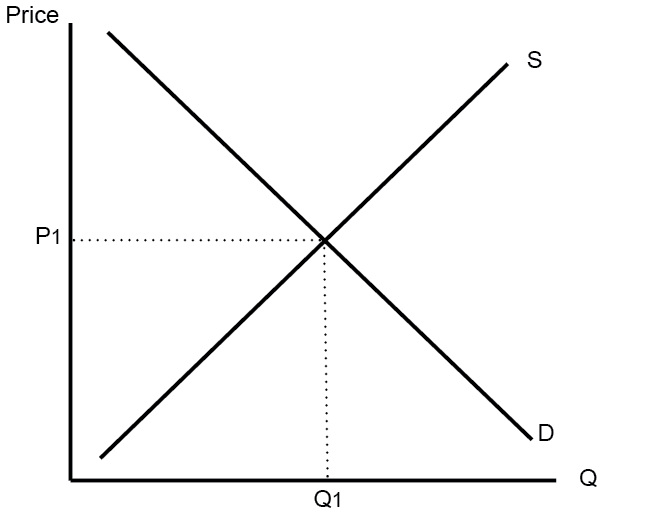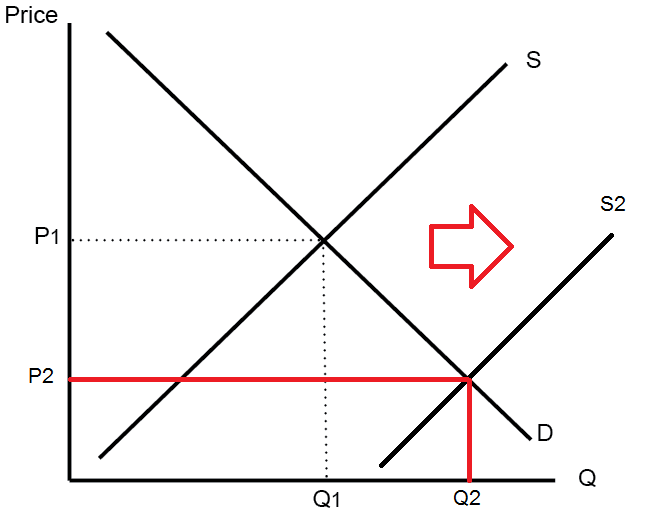Introduction
The demand and supply equilibrium is the basis of all commercial interactions between consumers and producers. It helps determine the price of products and the quantity available to the market. As a rule, market forces tend to serve as regulators for the fairness of established prices. If the quantity of goods exceeds customer demand, prices are likely to drop. If customer demand exceeds the quantity of supplied goods, then prices are likely to grow.
A price equilibrium is established when supply matches demand (Fine 151). The so-called invisible hand of the market, thus, is the main mechanism that enables the existence of free unregulated trade, which forms the basis of the existing global economy. The supply and demand model operates with the assumption of perfect competition. Imperfect competition caused by monopolies and single-product companies does not operate under the same rules. Understanding the price equilibrium enables economists to predict supply and demand shifts and develop various pricing strategies.
Illustration

Fig.1 represents a state of price equilibrium. It occurs when the price is located at the intersection of supply and demand graphs. In order to understand the value of a balanced price, one must examine what would happen if the price were determined without any heed for supply and demand. For example, if a supplier set up the price higher than the one permitted by the equilibrium, in the hopes of deriving more profits, the market would react to this action by dropping the demand for the good.
As a result, the producer would sell less goods than it normally would. Even if higher prices manage to make the venture profitable in the short-term perspective due to inelasticity of the market, the company would lose market share in the long run. Adversely, should the company sell goods at the price below the fair market price range, it will artificially increase demand, as many customers would be interested in buying quality goods and services at a cheaper price (Blue 1). The increase in demand would eventually lead to a supply shortage, which would force the producer to increase prices, as they would be unable to produce their products at the speed capable of satisfying growing demand.
Discussion
Supply and demand equilibrium can be used to provide basic understanding of economics. Many local, regional, and international crises can be explained through the lens of supply and demand. The ongoing oil crisis is one example of the equilibrium being neglected. In the year 2014 prices for oil collapsed internationally, going from over 100 dollars a barrel to less than 60. This event was caused by a combination of factors, some of which included the increase in supply by USA, China, and Libya, which coincided with the overall decrease of production values (thus less demand for oil) in Europe (Fine 203). As a result of this actions coupled with unfortunate timing, the supply-demand graph took a form as shown in Fig. 2:

As it is possible to see, the increase in oil production led to a significantly lower market price for oil. Therefore, one of the measures to bringing oil prices back to their historical values would be through decreasing production. It would move the supply curve back up against the demand scale, meaning an increase in price. Such a measure would help save oil instead of producing surplus while at the same time reduce the workload on all existing oilrigs. However, although OPEC has been pushing for this measure for a while, certain key players (like Saudi Arabia) remain fearful that not all countries involved will decrease production, which will lead to them losing their market share.
Conclusion
Supply and demand form the basis of modern economics. Although the linear graphs presented in this task are simplified illustrations of the proposed equilibrium, the core tenets behind them remain the same. By understanding how supply and demand correlate with one another, businesses can plot changes to their pricing policies and expect appropriate results. For example, a company with a surplus of goods can declare a sale, offering products below their fair market value to increase demand and sales.
At the same, as illustrated by the oil crisis case study, companies can reduce production in order to force prices to go up. This practice can work on the demand scale as well, empowering customers. Boycotting certain producers could force them to reduce prices or even bring them to ruin. Fair competition and a lack of defined monopolies facilitates technological growth and price reduction, both of which benefit the customer in the long run, as they receive better products for the same amount of money.
Works Cited
Blue, Neil. How Demand and Supply Determine Market Price. 2017. Web.
Fine, Ben. Microeconomics. University of Chicago Press, 2016.